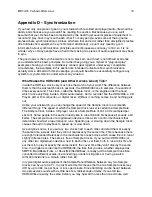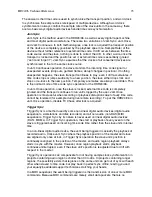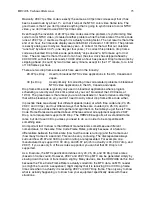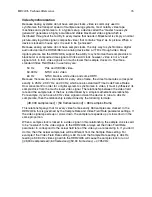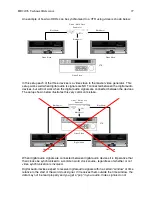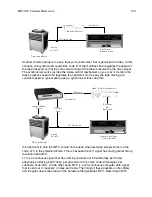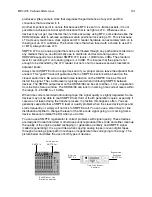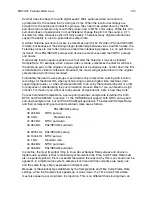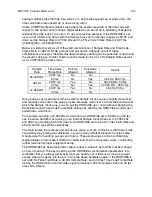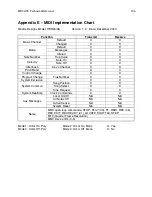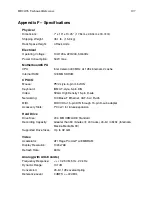
HD24/96 Technical Reference
102
There are times you may want to offset the position of two devices with respect to each
other, but still keep them synchronized to each other. For example, you may have a tape
containing audio that starts at 18:22:12:00, but you want to record this material to your
HDR24/96 starting at 1:00:00:00. In the HDR24/96, you can set the Time Code Offset
parameter to offset the position of the HDR24/96 transport with respect to incoming time
code according to the following rule:
Time Code In + Time Code Offset = Transport Position
Offsets can be either negative or positive. The above problem is solved by using a negative
offset of 17:22:12:00 such that:
18:22:12:00+ (-17:22:12:00) = 1:00:00:00
In the HDR24/96 time code output always follows the transport position. Time Code Offsets
are supported by nearly every time code-capable device.
Similar to the Time Code Offset in the HDR24/96 is the Song Offset. The Song Offset
determines what time code time corresponds to the downbeat of the first measure in
Bars|Beats|Ticks display mode. Instead of affecting the time code input, the Song Offset
affects only the display. Using the same example, a Song Offset of 18:22:12:00
corresponds to BBT 1:1:000. Some devices do not support display-only offsets like the
HDR24/96 Song Offset.
A Word or Three about Pull-Ups and Pull-Downs
Probably no aspect of synchronization causes more confusion than pull-ups and pull-downs.
That’s why we left this subject for last. Simply put, a pull-up or pull-down is the raising or
lowering of the speed of a device above or below the “standard” speed.
The only reason that pull-ups and downs exist is due to the Telecine process by which film
is transferred to video.
Worldwide, films that are destined for theatrical release are shot on film that runs at 24 fps.
In the US, after a film is shot, it is typically transferred to NTSC color video and edited on a
non-linear video editing system. Once the film editing is complete, video work prints are sent
out to the various parties involved in audio post production for the film.
Because NTSC color video runs at 29.97 fps and film runs at 24 fps, there is a non-integer
ratio between the number of video and film frames. To accomplish the transfer, the film is
slowed down by .1% to 23.976 fps to establish an integer relationship of 5 video frames to
every 4 film frames. This slowing down of the film IS the pull-down. The film and video
frames are then transferred by alternating between using three and two video fields (not
frames) per film frame in a process called 2:3 pulldown, as shown in the illustration below.
Summary of Contents for MDR 24/96
Page 109: ...HDR24 96 Technical Reference Pg 109 ...
Page 110: ......



